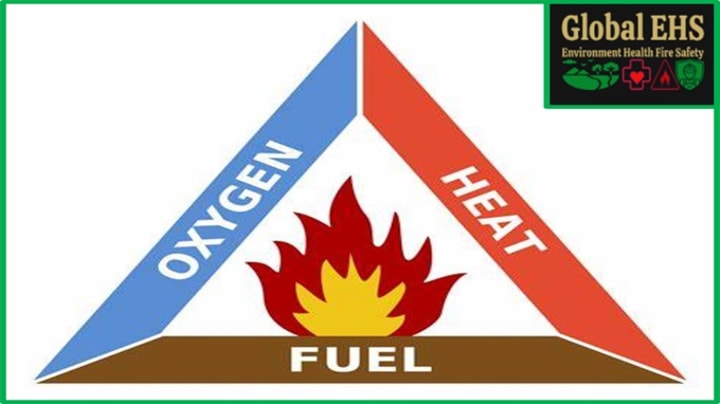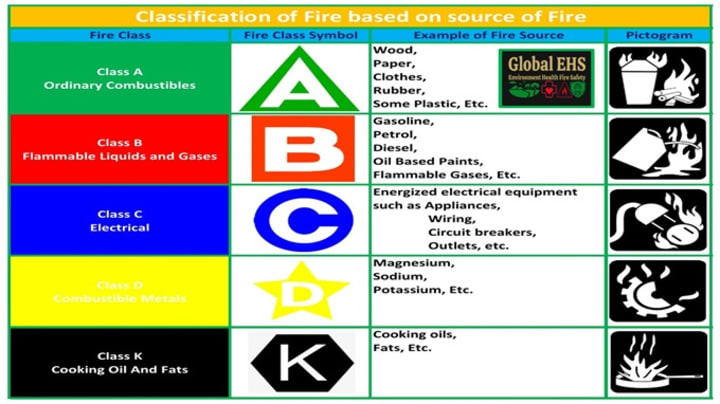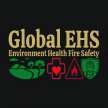
It is crucial to understand definition, components and behavior of Fire for effective fire prevention, firefighting and safety measures.
Definition of Fire:
Fire is a chemical reaction that causes rapid oxidation, releasing heat, light, and various reactants. This process, known as combustion, typically occurs in the presence of three components: a fuel source, an oxidizing agent (usually oxygen from the air), and an ignition source (heat).
The main components of fire are:
1. Fuel: Any combustible material, such as wood, paper, gasoline, or natural gas, that can sustain a fire.
2. Oxygen: Oxygen in the air in general and Other oxidizing agents.
3. Heat: Enough heat to start and continue the combustion process. Heat from various sources, including friction, electrical sparks, chemical reactions, or open flames.
The Fire Triangle:
1. Fuel
2. Oxygen
3. Heat

All three elements must be present and maintained for a fire to ignite and burn consistently. The fire can be extinguished by removing any of these items. This concept is often represented by a "Fire Triangle".
Fire Tetrahedron:
1. Fuel
2. Oxygen
3. Heat
4. Chemical Chain Reaction

The fire tetrahedron expands on the fire triangle by adding the chemical chain reaction necessary to sustain combustion. Interrupting this chain reaction can also extinguish the fire.
Phases of Fire:
• Ignition: The initial stage where fuel, oxygen, and heat combine to start the fire.
• Growth: The fire spreads and grows in intensity as it consumes more fuel and produces more heat.
• Fully Developed: The fire reaches its peak intensity, consuming the available fuel at its maximum rate.
• Decay: The fire's intensity decreases as the fuel is consumed and heat is reduced.
Types of Combustion:
1. Complete Combustion: Occurs when there is enough oxygen for the fuel to react completely, producing carbon dioxide, water, and releasing maximum heat.
2. Incomplete Combustion: Occurs when there is insufficient oxygen, resulting in the production of carbon monoxide, soot, and less heat.
By-products of Fire:
• Heat: The primary output of fire, which can cause burns and increase the spread of fire.
• Light: Visible flames and glow from the combustion process.
• Smoke: A mixture of airborne solid and liquid particulates, gases, and aerosols produced during combustion.
• Gases: Carbon dioxide (CO₂), carbon monoxide (CO), water vapor (H₂O), & other toxic gases depending on the materials burned.
Classification of Fire:
As per NFPA, based on source of material for fire, they are classified in to A, B, C, D, K.

1. Class A: Ordinary Combustibles
• Description: For fires involving common combustible materials such as wood, paper, cloth, rubber, and some plastics.
• Extinguishing Agents: Water, foam, multipurpose dry chemical.
• Symbol: Green triangle with an "A".
2. Class B: Flammable Liquids and Gases
• Description: For fires involving flammable or combustible liquids and gases like gasoline, oil, grease, tar, oil-based paints, and flammable gases.
• Extinguishing Agents: Carbon dioxide (CO₂), foam, dry chemical.
• Symbol: Red square with a "B".
3. Class C: Electrical Equipment
• Description: For fires involving energized electrical equipment such as appliances, wiring, circuit breakers, and outlets.
• Extinguishing Agents: Non-conductive agents like carbon dioxide (CO₂), dry chemical.
• Symbol: Blue circle with a "C".
4. Class D: Combustible Metals
• Description: For fires involving combustible metals such as magnesium, titanium, potassium, and sodium.
• Extinguishing Agents: Dry powder specifically designed for the particular metal.
• Symbol: Yellow star with a "D".
5. Class K: Cooking Oils and Fats
• Description: For fires involving cooking oils and fats, common in commercial kitchens.
• Extinguishing Agents: Wet chemical agents designed to saponify oils and fats, forming a non-combustible soapy layer.
• Symbol: Black hexagon with a "K".
Note:
• Fires where the fuel is flammable or combustible gas are classified as "Class C" in the European/Australian system, and "Class B" along with flammable liquids in the US system.
• Electrical Fires are classified as a "Class E" fire under the Australian system, "Class C" under the American system.
• Fires involving cooking oils and fats are classified as "Class F" under the European and Australian systems, and "Class K" under the American system.
About the Creator
Global EHS
Personnel with a industrial experience in Environment, Health, Fire and Safety. I share insights on Environment, health, Fire and safety to promote a safer, healthier and environment friendly world. Join me in making a positive impact!
Enjoyed the story? Support the Creator.
Subscribe for free to receive all their stories in your feed. You could also pledge your support or give them a one-off tip, letting them know you appreciate their work.






Comments
There are no comments for this story
Be the first to respond and start the conversation.